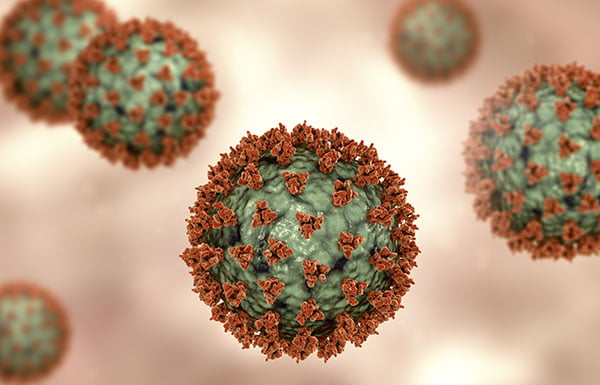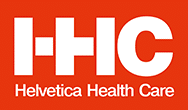The Excellent Range of Lectin Conjugate and its Usage

What are Lectin Conjugates
Lectin Conjugates are proteins (building blocks) that bind to cells and specific carbohydrate groups on proteins or cell membrane proteins. They are further divided into classes based on their amino acid sequences and biochemical properties. Lectins have 120 amino acids that are responsible for carbohydrate binding.
Lectin is used to study cell surface glycoproteins in glycobiology due to this particular carbohydrate binding. Lectins are produced in laboratories where they have been isolated from either plant or animal components.
Most lectin proteins consist of non-covalently associated subunits by giving the Lectins their ability to form precipitates with glycoconjugates. Agglutination of cells by Lectins in nature is not characteristic and hence extremely difficult to detect.
Lectins allow researchers to study a wide range of biological structures and processes. Due to their complex binding requirements, some Lectins bind to mannose or glucose residue, while others bind only to galactose residues. Some types of Lectin also require sugar-binding in specific positions in the oligosaccharides.
Usage of Lectins
Lectins are being used in clinical laboratories to type blood cells. There is the extensive usage of Lectin in specialist applications such as-
• As chemotherapeutic agents
• In fractionation of animal cells as mitogens.
• While investigating cellular surfaces
• Lectins isolate specific cells or viruses with a mixture and study determined processes amongst several.
Lectin in Animals
• Regulate cell adhesion
• Glycoprotein synthesis is regulated by Lectins
• They can also regulate blood protein levels.
• Recognition of galactose residues on the surface of mammalian liver cells responds better to Lectins.
Lectin in Plants
Plants naturally have high amounts of lectins. Some protein foods such as beans and legumes, peanuts, lentils, wheat, raw kidney beans, fruits, and vegetables are dietary lectins. On the other hand, pasture-raised meats, cooked sweet potatoes, cruciferous vegetables, asparagus, garlic, and onion are lectin-free diet foods.
Lectin activity and its function in plants are somewhat uncertain. With growth, the concentration of Lectin in plant seeds begins to decrease. Plant Lectin can recognize hydrophobic noncarbohydrate ligands.
This includes adenine, auxins, cytokinin, and indole-3-acetic acid, as also water-soluble porphyrins. Since such molecules function as phytohormones, their interactions could be psychologically relevant.
Besides, the plasma membranes of practical murine EL4 tumor cells get tagged with horseradish peroxidase-conjugated wheat-germ agglutinin. After the interruption of the labeled intact cells, plasma-membrane refining is observed by ultra-structural check of the several fractions for positive effect product on the membrane vesicles.
Lectins and Other Carbohydrate-Binding proteins
A wide variety of oligosaccharides are contained within cellular proteoglycans, glycoproteins, and glycolipids. Fluorescent derivatives of Carbohydrate-BindingProteins are used to detect intracellular glycoconjugates through microscopy and flow cytometry. This is done to isolate glycoproteins on protein blots and cause agglutination of specific cell types. Lectins are also useful indicators of cancer since they display altered surface glycoproteins.
Lectins Interconnecting Proteins
Keeping in mind the various diseases that affect the human species, biotechnology has narrowed down biorecognition molecules with diagnostic potentials. Particular Lectin content interacts with high affinity to mono- or oligosaccharides through no covalent linkage, which involves hydrogen bonds.
Lectins isolated from sources such as viruses, bacteria, fungi, algae, animals, and plants recognize carbohydrates in cells, tissue sections, and biological fluids. These are beneficial tools in diagnosis applications. Sialic acid-specific Lectins such as Influenza Virus Hemagglutinin is to search drugs and inhibitors. These are capable of removing or blocking sialic acid in host cells to prevent binding.
Similarly, intense anti-HIV activity in vitro has been indicative of bacterial Lectins. Large amounts of algal Lectins have been gaining attention for biomedical applications, including anti-HIV anti-inflammatory, antimicrobial and antinociceptive activities. Animal Lectins play a pivotal role in psychological processes such as metastatic cancer, apoptosis pathways, and immunomodulation.
Lectin induced mechanisms of inflammation responses
Immune systems act in two specific ways called; innate and adaptive responses. These responses are activated by a group of cells and molecules that promote the destruction of aggressive agents. Neutrophils, eosinophils, basophils, and mono/macrophages can generate and release molecules called cytokines.
These molecules modulate the activation of immune cells, inflammation, and humoral responses. Biomolecules like these are the answer for adjustment of immune conditions and therapeutic applications in regards to immune response-related diseases.
Lectins are thought to contribute to the development of diseases such as celiac disease, autoimmune diseases, rheumatoid arthritis, obesity, cardiovascular disease, and type 2 diabetes. This happens through translocation across the intestinal barrier and activation of the adaptive immune system. Common high-lectin foods include grains, legumes, and nightshades.
Lectins aren’t digestible. They bind to cell membranes lining the digestive tract, where they may disrupt metabolism and cause damage. Lectin sensitivity is the body’s delayed immune response that can occur some hours to even days after these foods are consumed.
Symptoms associated with lectin sensitivities include:
•Bloating and abdominal cramps
•Painful or swollen joints
•Tiredness
•Skin problems
•Hormonal fluctuations
•Nausea
•Allergies or allergy-like symptoms
•Neurological symptoms
The highest concentrations of lectins are found in healthy foods like legumes, grains, and nightshade vegetables. Fortunately, there are ways to reduce the lectin content of these healthy foods to make them safe to eat.
Research studies have shown that by cooking, sprouting, or fermenting foods high in lectins, their lectin content can easily be reduced to negligible amounts.
Foods That Are High in Lectins
1. Red kidney beans
Raw kidney beans contain high levels of a lectin called phytohaemagglutinin. Eating them raw or undercooked can cause severe nausea, vomiting, and diarrhea. As few as five beans can cause a response.
A hemagglutinating unit (hau) is a measure of lectin content. When in raw form, red kidney beans contain 20,000–70,000 hau. Once cooked, however, they contain only 200–400 hau, which is considered a safe level.
In cooked form, they are valuable and nutritious food.
2. Soybeans
Soybeans have several health benefits but are another food that also contains high levels of lectins.
As with red kidney beans, cooking soybeans almost eliminates their lectin content, provided they are cooked at high temperatures. Studies show that soybean lectins are almost completely deactivated when at 100°C for at least 10 minutes.
3. Wheat
Raw wheat, including wheat germ, is high in lectins, with around 300 mcg of wheat lectins per gram. (Whole-wheat flour has a much lower lectin content at about 30 mcg per gram). Lectins are almost completely eliminated by cooking and processing, and as most whole-wheat products consumed are cooked, it’s not likely that lectins pose a major risk to health.
4. Tomatoes
Tomatoes are part of the nightshade family. They are high in fiber, a good source of potassium and vitamin K1, and high in vitamin C. (One tomato provides about 20% of the daily recommended value.
Tomatoes also contain lectins, though there is little evidence that they have any adverse effects on humans. Some people have linked tomatoes and other nightshade vegetables to inflammation, such as arthritis. No formal research has supported this link.
5. Potatoes
Potatoes are also members of the nightshade family and a good source of vitamins and minerals. Potato skins are particularly high in antioxidants, such as chlorogenic acid, which has been linked to a reduced risk of heart disease and type 2 diabetes. As with tomatoes, adverse effects have been experienced by some when eating potatoes. Studies have shown that this could be linked to lectins.
6. Peanuts
Peanuts are an excellent source of protein, unsaturated fats, and many vitamins and minerals.
Peanuts do contain Lectin, and one study found that peanut lectins increased growth in cancer cells. With evidence that peanut lectins can enter the bloodstream, this has led some people to believe that lectins could increase the risk of cancer spreading in the body. However, the above study was carried out using very high doses of pure lectins placed directly onto cancer cells.
No studies have investigated their exact effects on humans. Evidence of their health benefits appears to be stronger than that of any risks.
Drug delivery using Lectin source of protein
Chemical agent therapies often come across as barriers when the need for increasing dosages and action of metabolism reduces the effectiveness of treatments. Delivery of drugs to specific targets requires a new and an effective strategy to combat side effects and chemical reactions.
Lectin medicated bio adhesion constitutes specified interactions with receptor-like structures in the cell membrane, binding directly to targeted cells. Therefore Lectins can interact differently with distinct cells and act as drug carriers to desired tissue and cells. For it to be a tool in drug delivery Lectins, need to be avid binding, low toxicity, and site-specific molecules.
To conclude, Lectins from diversified sources with distinct carbohydrate recognition events play a vital role in many biotechnological applications/disease therapies. The uses in vitro and in vivo display Lectins with protective effects against viruses and microorganisms. Lectins are a highly potent modulator of an immune response, mitosis, proli9, healing, drug delivery therapies, and cancer regression.
Histochemistry, biosensors, detect diseases, and infections against glycans alterations on cells or tissue surfaces, and serum samples can be isolated using Lectin-based technology and techniques. There is potential to unravel new interpretations in the biological effects, pathways, and biotechnological potential of Lectins. They are focusing on their achievements in therapeutic applications and health effects.
Want to learn more about Lectin Conjugate, its usage, and health benefits? Contact our experts at Helvetica Health Care today!

